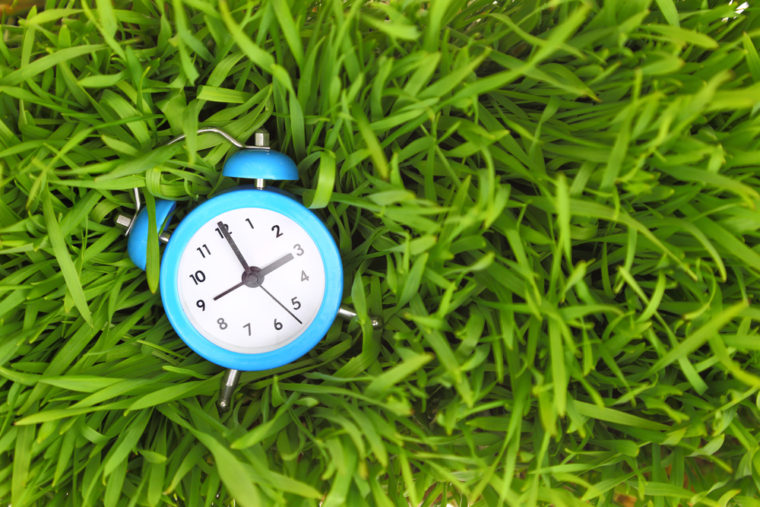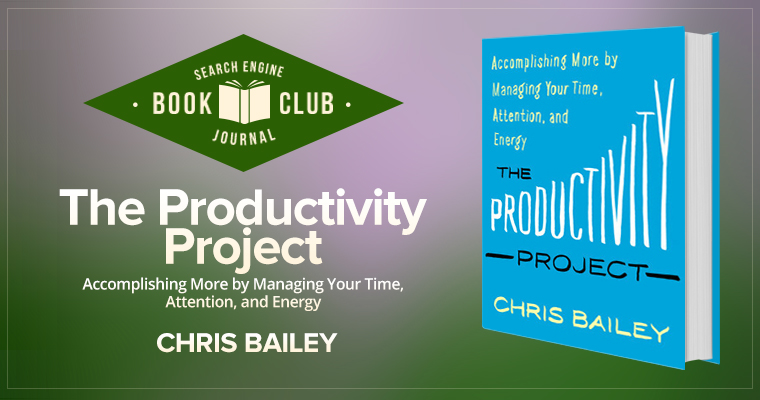One of the best books I read this year was The Productivity Project: Accomplishing More by Managing Your Time, Attention, and Energy by Chris Bailey. I had originally heard of the author from his popular website, A Year of Productivity (which he has since moved to A Life of Productivity). AYOP was centered around Bailey taking a year off to research productivity and all the purported techniques that were supposed to help us accomplish more in less time.
The book, for being about someone experimenting about productivity, wasn’t dry at all and was extremely easy to read. He gives estimated reading time at the beginning of each chapter, which is something he always does with his blog posts. I appreciated this because it let me know how much more reading time I needed to carve out before bed to finish a chapter.
Below, I go over a few productivity methods that didn’t work for the author and a few that did.

Which Productivity Techniques Don’t Work
Bailey tries several different techniques, most of which are worth reading about instead of me describing here. The techniques that he found didn’t work the most were unsurprising to me, yet they continue to be popular in our work culture, especially in the United States.
50-90 Hour Weeks
Bailey worked a 90 hour week to see if it allowed him to get more done. The work culture in the United States continues to operate under the belief that more someone worked, or the longer they stayed at the office, the better (and therefore, more productive) employee they are. Several studies, including one named by Lifehacker and done by Stanford University, has shown that working more than 50 hours per week won’t guarantee you are getting more done.
Most people hit a wall around that many working hours (which translates to roughly ten hours per day) and spend the rest of their time at the office procrastinating or focusing on non-productive tasks. If you think slaving away at the office is making you the best employee, you may be mistaken.
Ignoring Sleep and Nutrition
Bailey was surprised at how huge of an impact slacking off on sleep, nutrition, and exercise had on his productivity levels. He found that sleeping less than eight hours a night not only made him not able to focus, but groggy and distracted the next day. When he slacked on proper nutrition and exercise, his energy levels also suffered.
While this likely isn’t a new idea to anyone, Bailey shares that these components had the biggest impact on his productivity. The Harvard School of Public Health claims most need 2.5 hours of moderate exercise per week to stay healthy. If you are overweight, you may need more. For instance, a Women’s Health study found that women who have maintained their weight get about an hour of exercise per day.

If you need some help getting started with a better sleep and exercise routine or diet, these resources might help:
- Workout Routines on Pinterest
- FitnessBlender
- YouTube searches for specific exercises, like Yoga
- Sleepyti.me tells you when to go to bed based on when you have to wake up to get full sleep cycles so you’re well-rested.
- Twilight and other lux screen apps filter out blue light at night, so staring at your phone screen won’t keep you awake
- Track your food and exercise with an app like MyFitnessPal or LoseIt!
Keeping Email and Social Media Open
Another unsurprising finding from Bailey was that keeping social media and email tabs open while you’re trying to work has a significant impact on your productivity. Because you are likely to be distracted by the immediate gratification that getting “likes” or messages can provide, social media can great decrease your productivity, according to Elsevier.
Email is much the same. According to the Harvard Business Review, “each time we return to our initial task, we use up valuable cognitive resources reorienting ourselves. And all those transitional costs add up.” HBR cites a UC-Irvine study that found it takes us up to 20 minutes to get back into concentration mode after something like email takes our focus.
When working on a single project, close all social media and email tabs, and put your cell phone and IM programs to do not disturb or silent.
Which Productivity Techniques Actually Work
A lot of the tasks Bailey tried did help, but below are the top three I’ve also found to have the biggest impact on my overall productivity levels.
Complete Three Tasks Per Day
This is a tenant from productivity bible Getting Things Done: The Art of Stress-Free Productivity by David Allen. As part of the system Allen (and subsequently, Bailey) recommend looking at your to-do list in the morning (or the night before, when you are leaving your office for the day) and identifying the three “must-do” tasks for the day. These are things that would negatively affect your job, client relationships, or income if you didn’t do them.
Often, we place equal importance on all our tasks; instead of choosing to focus only the most important that are the ones moving us forward. Outlining these three tasks, and solely working on accomplishing them are what are going to make you most productive. You can use a to-do list app to identify these, or just use an old-fashioned pad of paper that you keep on your desk.
As long as you complete your three tasks per day, Bailey and Allen promise that you will keep moving forward and everything will eventually get done.
A “Master” To-Do List
One unique thing Bailey mentioned that I had never heard of before is also keeping a “master” to-do list in adding to your daily or weekly ones. This to-do list keeps track of goals and items that you want to complete in six specific areas in your life:
- Mind
- Body
- Emotions
- Career
- Finances
- Relationships
- Fun
Keeping track of a few goals in each of these areas and then keeping the list somewhere visible in your office or home can be a continuous reminder of how your daily activities affect your top-level goals. Bailey said this inspired him to be more productive each day because he was reminded how the “small” tasks make an impact on something bigger, such as losing 15 pounds or making enough money to go to Thailand on vacation.
Maintenance Day
Finally, something that Bailey introduced in his book that was a newer concept to me was the idea of a dedicated “Maintenance Day.” People have mentioned this before, but Bailey recommends lumping all your undesirable errands or regular tasks into one day so you’re not forced to do a few tasks every day. That way, your time six days per week can be focused on being productive with your top three to-dos, instead of feeling guilty for not buying stamps or doing laundry.

I’ve started implementing this on Sundays and have taken the laundry idea even further—I only do my laundry every 3-4 weeks and I do it all at once. This comes out to 5 or 6 loads of laundry, but it’s done over a single afternoon instead of trying to make myself do a load or two every week. It has helped me not only hate laundry less, but make sure the guest bed isn’t covered in clean clothes that need to folded for weeks at a time.
Other things you can tackle on your maintenance day besides laundry:
- Cleaning
- Bills
- Errands, like car wash, dry cleaning, or mailing returns
- Meal prep for the week ahead
- Schedule out meetings and weekly to-do list
You’ll find it extremely easy to get a lot done on your maintenance day because you’re in the frame of mind to do all these undesirable tasks.
The Productivity Project was filled with so many great insights and I highly recommend it. As long as you are outlining your big goals, your three most important daily tasks, and setting aside time to do your errands or household tasks, you’ll find that it’s not necessary to work 90 hour weeks. Bailey is pushing for us all to embrace a 20 hour work week and says it’s possible if we were our ideal productive selves.
While I’m sure this depends on a person’s industry and individual circumstances, it is motivating to know Bailey ran a daily blog while also conducting research and writing a book, all while working an average of 20-30 hours per week.
Next Month on SEJ Book Club: Eat That Frog! by Brian Tracy
Next month, SEJ Social Producer Caitlin Rulien will review Eat That Frog! 21 Great Ways to Stop Procrastinating and Get More Done in Less Time By Brian Tracy.
Feel free to pick a copy online or from your local library and read along with us! Want to see what the SEJ Book Club has read or is planning on reading next? Check out our GoodReads profile.
What productivity techniques have been most successful for you?
Editor Note: This post contains Amazon affiliate links. Thanks for supporting SEJ.




